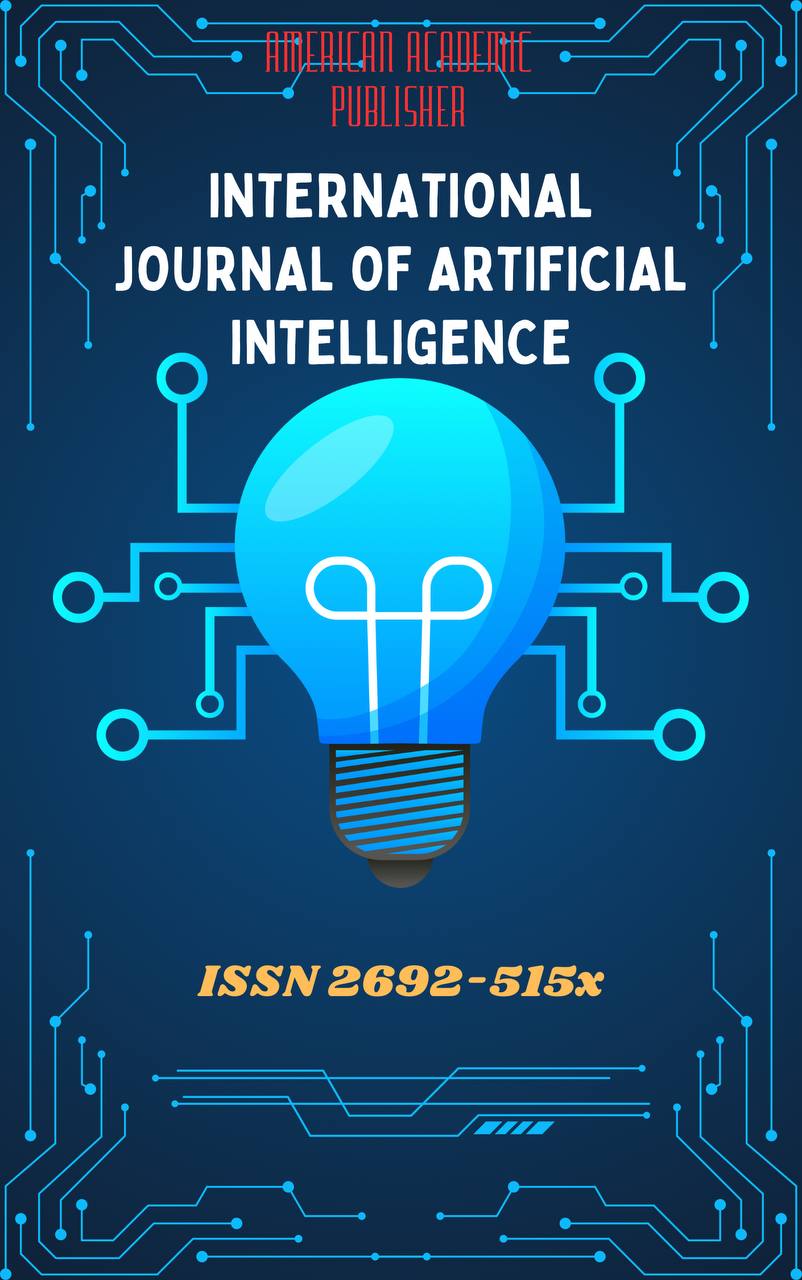 Articles
| Open Access |
Articles
| Open Access | ENHANCING STUDENTS’ UNDERSTANDING OF MACHINING PROCESSES THROUGH INTERACTIVE AND GAMIFIED LEARNING TOOLS
Tuyboyov Oybek Valijonovich ,Toshtemirova Gulnora Ayubjonovna , Head of the Department at Technology Transfer. Ministry of Higher Education, Science and Innovation of the Republic of Uzbekistan,/Almalik State Technical University, assistant of the Department of Mechanical Engineering (Uzbekistan).Abstract
Machining processes, including turning, milling, and grinding, are vital to modern manufacturing, ensuring precision and adaptability in producing high-quality components. However, traditional teaching methods often fail to bridge the gap between theoretical knowledge and practical skills, limiting students' understanding and engagement. This study investigates the impact of interactive and gamified learning tools on enhancing students' comprehension of machining processes in a mechanical engineering course. Using a mixed-methods research design, the study assessed the outcomes of innovative pedagogical strategies, including project-based learning, flipped classrooms, and virtual simulation labs, compared to traditional lecture-based instruction. A quasi-experimental approach with pre-test and post-test assessments was conducted on 150 undergraduate students, divided into experimental and control groups. The experimental group utilized interactive tools and real-world case studies, while the control group followed conventional methods.
Findings revealed that the experimental group demonstrated significant improvement in knowledge acquisition, engagement, and satisfaction compared to the control group. Gamified and interactive tools effectively bridged theoretical-practical gaps, fostering deeper cognitive, emotional, and behavioral involvement in the learning process. These results underscore the potential of active learning methodologies to enhance educational outcomes in machining processes, preparing students to meet the demands of advanced manufacturing industries. The study highlights the need for integrating innovative tools into engineering curricula to foster a balanced and comprehensive understanding of machining principles.
Keywords
Machining processes, Interactive learning, Gamified learning, Project-based learning, Flipped classroom, Virtual simulations, Engineering education, Knowledge acquisition, Student engagement, Manufacturing education
References
. Weiner, A. M. (2011). Ultrafast optical pulse shaping: A tutorial review. Optics Communications, 284(15), 3669-3692.
. Lingayat, A., Balijepalli, R., & Chandramohan, V. P. (2021). Applications of solar energy based drying technologies in various industries–A review. Solar energy, 229, 52-68.
. Kholopov, V. A., Kashirskaya, E. N., Kushnir, A. P., Kurnasov, E. V., Ragutkin, A. V., & Pirogov, V. V. (2018). Development of digital machine-building production in the Industry 4.0 concept. Journal of Machinery Manufacture and Reliability, 47, 380-385.
. Ulsoy, A. G., & Koren, Y. (1993). Control of machining processes.
. Husseini, S. M., O’brien, C., & Hosseini, S. T. (2006). A method to enhance volume flexibility in JIT production control. International Journal of Production Economics, 104(2), 653-665.
. Bourdieu, P. (1973). The three forms of theoretical knowledge. Social Science Information, 12(1), 53-80.
. Igharo, P. E., Baridue, L., Opakirite, L., & Daniel, M. (2022). Essential Skills of Lathe Machining Operation Needed by Students of Technical Colleges for Job Creation in Rivers State. International Journal of Advanced Research and Learning, 1(1).
. Abrate, S., & Walton, D. (1992). Machining of composite materials. Part II: Non-traditional methods. Composites manufacturing, 3(2), 85-94.
. Candy, L., & Ferguson, S. (2014). Interactive experience, art and evaluation. In Interactive experience in the digital age: Evaluating new art practice (pp. 1-10). Cham: Springer International Publishing.
. Munadi, S., Choiron, Z., Harjanto, C. T., & Ardhantano, R. (2020, December). The achievement of competency standards for machining graduates. In Journal of Physics: Conference Series (Vol. 1700, No. 1, p. 012019). IOP Publishing.
. Liu, X., Li, Y., & Gao, J. (2016). A multi-perspective dynamic feature concept in adaptive NC machining of complex freeform surfaces. The International Journal of Advanced Manufacturing Technology, 82, 1259-1268.
. Jiea, P. Y., Chuan, T. C., Ahmad, S. S. B. S., Thoe, N. K., & Hoe, L. S. (2021). Minecraft Education Edition: The perspectives of educators on game-based learning related to STREAM education. Learning Science and Mathematics, 16, 121-138.
. Lauro, C. H., Brandao, L. C., Baldo, D., Reis, R. A., & Davim, J. P. (2014). Monitoring and processing signal applied in machining processes–A review. Measurement, 58, 73-86.
. Granger, R. (2005). Brain circuit implementation: High-precision computation from low-precision components.
. Giovannoni, E., & Fabietti, G. (2013). What is sustainability? A review of the concept and its applications. Integrated reporting: Concepts and cases that redefine corporate accountability, 21-40.
. Konst, T., & Kairisto-Mertanen, L. (2020). Developing innovation pedagogy approach. On the Horizon, 28(1), 45-54.
. Akçayır, G., & Akçayır, M. (2018). The flipped classroom: A review of its advantages and challenges. Computers & Education, 126, 334-345.
Article Statistics
Downloads
Copyright License

This work is licensed under a Creative Commons Attribution 4.0 International License.

